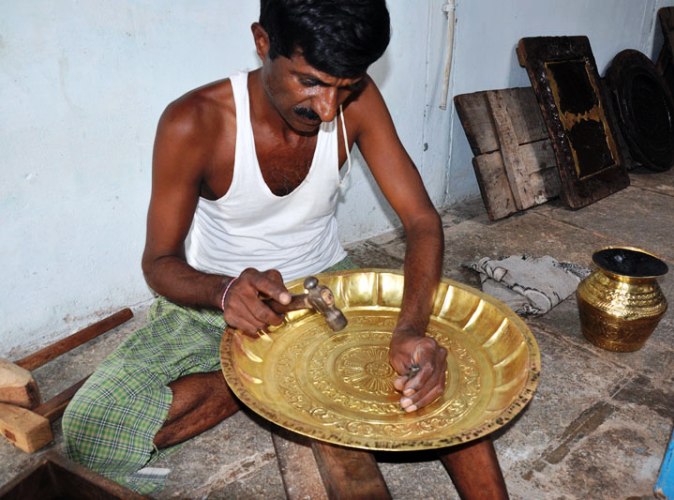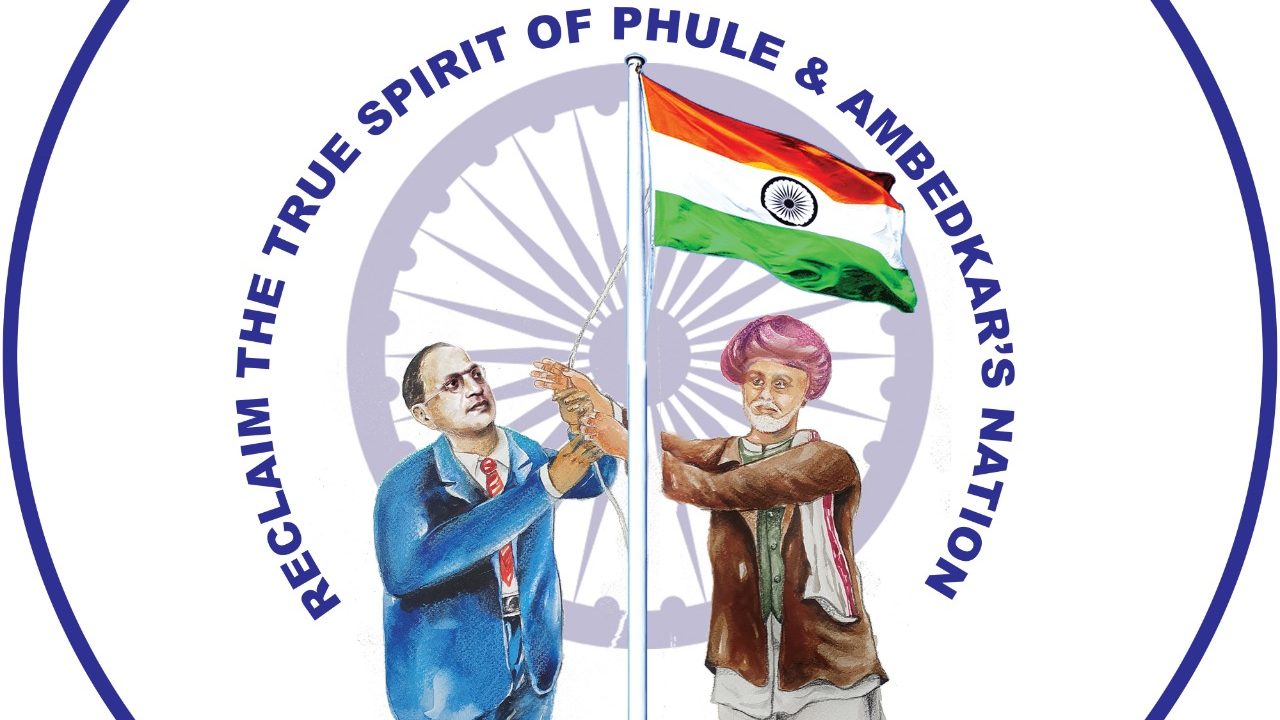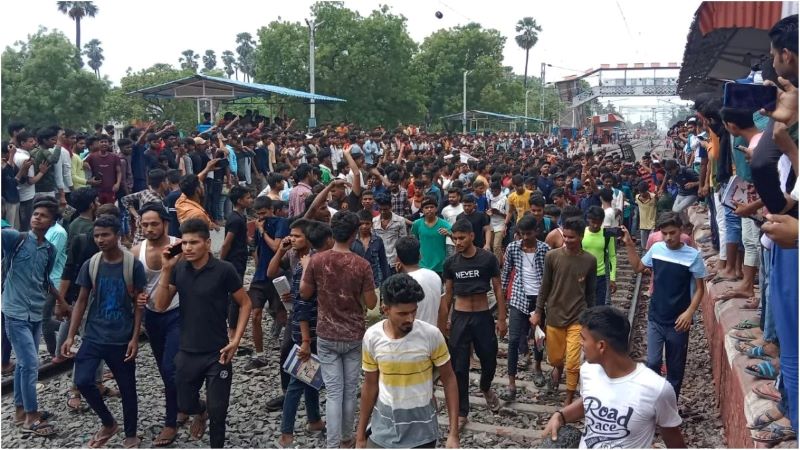By all accounts, the larger chunk of the Indian labour falls within the unorganized sector. Most estimates put the proportion of workers in the unorganized sector to be around 90 per cent. There now exists a dichotomy in the Indian working class. On the one hand is the organized sector that enjoys ironclad employment security and benefits of the various labour laws. On the other hand is the vast section that toils under primitive work conditions with absolutely no security of any kind. A large proportion of the unorganized sector works under conditions that can be described as “bondage” as defined in The Bonded Labour System (Abolition) Act and that is now increasingly referred to as modern slavery.
India has a large number of labour laws. There are upwards of 40 central labour laws. The more progressive states have also legislated on labour issues. However, only a tiny section of the Indian working class benefits from these myriad laws. Paradoxically, the sections that benefit most from these laws are those that need them the least as a safeguard against exploitation. The organized working class of India comprises primarily employees of state undertakings like Air India, banks, ONGC, Indian Railways and some sections of large private enterprises. Most of these enterprises simultaneously have a large mass of workers who are employed through contractors and who have no protection and have to perform all the menial tasks. The trade unions that represent organized sections of the working class in these enterprises have little stake in the contract workers.
The government servants comprise the most organized section of the working class. None dare cross their path. Collectively, they have the power to make or break governments as so many state governments have realised. There was a time when government servants were considered poorly paid. In fact, low government salaries were cited to rationalize corruption. This is no longer the case. Government salaries now exceed market wages, except for a tiny fraction of private executives. Government pensions are so high that these threaten finances of many state governments. About corruption, the less said the better. It can be safely stated that in spite of an Anna Hazare here and an Arvind Kejriwal there, corruption is a way of life for middle-class India.
Then there is the vast mass of workers in the unorganized sector. Workers on contract do most of the manual work in the primary and secondary industry. Nearly all the employment in the bourgeoning service industry is in the unorganized sector. Seasonal migrants comprise an increasingly large proportion of the workers. Recruited from distant locations through a network of labour contractors, the workers live in temporary accommodation at or near the worksite. They have absolutely no safety net and often are not paid their wages at the end of the work season. An initial advance, coupled with piece rate payment, forces the workers to work 12 hours or more a day. While the civil society is crowing about the Right to Education Act, the fact is that the incidence of child labour is on the rise. Many emerging work streams have an exclusively adolescent female workforce, showing the trend of feminization of labour.
The duality of the Indian labour class reflects the duality of Indian society. The organized sector comprises primarily the upper castes and upwardly mobile sections from among the Other Backward Castes (OBCs). The unorganized sector is drawn from primarily the Scheduled Castes, Scheduled Tribes and the lower sections of the OBCs. The extremely low wages and the primitive work conditions have to be understood in the context of the caste system where manual work is considered polluting and lies in the domain of the Shudras and Untouchables. The upper castes perform only white-collar managerial jobs. The old feudal caste order has been replicated in the new so-called modern world.
It is necessary to point out this dichotomy to chart out the route of future struggle. A vast section of civil society (itself primarily an upper-caste enterprise) often expects the established labour federations to organize the unorganized sector. This is wishful thinking. It has not happened so far and is not likely to happen in the future. The established labour unions, whatever their political hue, all represent the organized sector – the banks, the railways. There exist acute class contradictions between this section and the working class in the unorganized sector. The bank employee belonging to a national federation most probably hires domestic servants at low wages. The employees of public-sector undertakings, who enjoy all the benefits, do so riding on the back of the thousands earning their daily bread through contract labour.
The organized sector is made up of primarily white-collar workers, who come from the middle class and are very much a part of the ruling class. Its class character is also reflected in its ideological orientation. The right-wing Bhartiya Majdoor Sangh is reportedly the largest trade union federation now. Even the members of the left-wing federations routinely vote for right-wing candidates during elections. The vast gulf that separates the organized and unorganized sectors became starkly apparent recently when a major leftist federation proposed a five-workday week. In a country where the workers in the unorganized sector do not have the luxury of even a monthly holiday[1], the proposal of a five-day working week for the organized sector is a cruel joke.
The way forward: It can be said at the risk of sounding clichéd that only a revolutionary movement of the toiling masses can break the duality in the Indian labour class. However, we are still left with the task of identifying issues around which this revolutionary movement can be built.
Unified labour code: Indians love making laws. Our Constitution is supposedly the longest in the world. As pointed out before, there are more than 40 central labour laws alone. There has been a proposal before to consolidate these myriad labour laws into a single labour code[2]. This is somewhat similar to the tax code that is much more in news. Besides the ease of implementation, this code has the potential of removing the distinction between organized and unorganized sectors. As of now, our labour laws create this distinction. For example, the Contract Labour Act legitimizes contract labour. A unified labour code would be applicable to all sections of the working class (including government employees). It has the potential of doing away with the distinction between the organized and unorganized sectors.
Breaking down the caste system: It can be said that as the duality of labour reflects the duality in society, it is not possible to break this duality unless the duality in the social structure – caste system – breaks down. It is not impossible. There was a time when breaking the caste system was on the agenda of enlightened public opinion. Ambedkar’s monograph Annihilation of Caste was a lecture he had written to deliver at annual convention of Jaat Paant Todak Mandal. A hundred years ago, the political convention of the Indian National Congress used to be accompanied by a Social Congress that focused on social issues. There is an urgent need to bring destruction of caste back on the public agenda.
Rediscovering the dignity of labour: Division of labour has resulted in the degrading of manual labour in most societies. The caste-based division of labour, as is the norm with all elitist divisions of labour in different societies, looks down on manual labour. However, while other societies have erased this divide with social and political changes, Indian society remains stuck in the old groove. Thus the tasks like washing of dishes and sweeping are a taboo for the middle class. These are meant for low-caste poorly paid primarily female workers. There is an urgent need to rediscover the dignity of labour and reduce the vast gap between compensations for manual and white-collar work.
Organizing workers in the informal sector – a new paradigm: The nature of the workforce has changed. Most of the workers in the informal sector are seasonal migrants who travel long distances from their homes, sometimes with their families, to live and work in a place for defined work seasons. The workforce, recruited and deployed by labour contractors, changes every year. It is not possible to organize this workforce using old methods that focused on the factory floor. It requires a new paradigm. The elements of this paradigm based on our experience[3] are:
- Identifying migration streams: source and destination
- Work in both source and destination area
- Working across the whole migration stream
- Interacting with labour contractors and working with them where possible
- Building coalitions with progressives in destination areas
- Policy advocacy with state organs
Marriage of Marx and Ambedkar: It is a historical tragedy that the two revolutionary streams in Indian polity continue to plough independent furrows in spite of all the water that has flown down the rivers over the past century. There is no indication that Left parties of various hues, ranging from the parliamentary to the extremist, have come to terms with the centrality of caste in Indian revolution. On the other hand, the Dalit movement continues to ignore working-class issues, in spite of the fact that the caste system is a division of labour (or labourers), as has been pointed out. Bringing these two ideologies together is the biggest challenge before the movement of unorganized workers.
.[1] Traditionally ‘amavas’ (no moon) has been a no-work day in the unorganized sector. However, these days the open-place labour markets in Indian cities are even more crowded on amavas as the labour from closed establishments flocks to these markets.
[2] In 1996, honourable member of parliament Sri Sanat Mehta introduced the Unified Labour Code as a private member’s bill. The bill had been drafted by a group of eminent jurists and labour law activists.
[3] The Centre for Labour Research and Action has organised large-scale industrial action among brick kiln workers across different locations in a number of states. It successfully organized labour contractors in a large agriculture stream to hike wages.
Forward Press also publishes books on Bahujan issues. Forward Press Books sheds light on the widespread problems as well as the finer aspects of the Bahujan (Dalit, OBC, Adivasi, Nomadic, Pasmanda) community’s literature, culture, society and culture. Contact us for a list of FP Books’ titles and to order. Mobile: +919968527911, Email: info@forwardmagazine.in)









